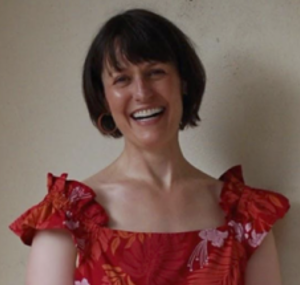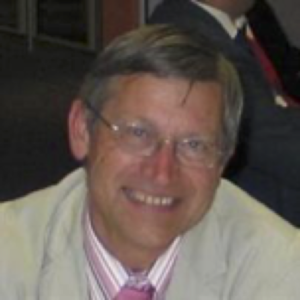Be sure to join us promptly at 0900 Pacific time on these dates for live talks by featured speakers you won’t want to miss, followed by moderated question-and-answer session.
Opening Keynote
Julie Bentz
What is the Global Nuclear Detection Architecture (GNDA)?
9 a.m., Wednesday, May 19
This talk will discuss the origins of this concept, some of the fits and starts along with where I believe we are today and where we need to go.

Kary Myers
Beyond Machine Learning 101: Designing Training and Test Sets to Meet Real-World Challenges
9 a.m., Friday, May 21
Standard practice when developing supervised machine learning models is to randomly divide your available data into a training set and a test set — extra credit if you also create a third set for tuning or do a form of cross-validation. For the examples in the training set, you allow your model to use the true labels and tune the model parameters accordingly. For the examples in the test set, your model predicts the labels, and you score the model’s performance by comparing the predicted labels to the true labels. This random split approach works great if your examples are all independent from each other, share the same underlying characteristics or distribution, and match the characteristics or distribution of the real-world examples against which you ultimately want to deploy your model. But what if your data have temporal or spatial correlations? What if your available data have systematic differences from what you’ll see “in the wild”? Using the typical randomization scheme in these cases can easily lead you to overestimate (sometimes by a lot) the performance of your model in the real world. In this talk I’ll present two examples that illustrate what can go wrong and offer strategies to mitigate those risks. One comes from a radiation detection competition, another from an investigation of data collected around a nuclear reactor. Both efforts come from investments by the Office of Defense Nuclear Nonproliferation Research and Development’s Next-Generation AI portfolio, which seeks to advance the state of the art to overcome limitations of conventional machine learning approaches and develop methods that are suitable for high-consequence missions of national security.

Donald Hornback
A perspective on federally supported research and development for radiation detection emerging technologies targeting national security applications in the United States
9 a.m., Monday, May 24
At the national level, capabilities to detect, locate, and interdict nuclear threats and radiological materials contribute a layer to the overall national defense. Research to improve detection technology serves as an enabling capability in support of U.S. nonproliferation, verification, and counterterrorism missions covering a wide range of operational environments. The research infrastructure for new capabilities is shared by several United States government agencies and offices.
Supported by DoD, DOE/NNSA, DHS, and ODNI, basic and applied research in radiation detection technology is conducted at the DOE national laboratories, DoD Service laboratories, industry, and universities. Each federal research program focuses on addressing their unique mission needs and is challenged to coordinate R&D efforts across a broad performer base. These national security R&D programs, combined with other advances in basic science, academia, and industry, continue to push the development of emerging technologies in detection materials, readout, analysis, algorithms, and other areas. These developments will permit new capabilities for a number of national security applications. This talk will offer a perspective on these emerging developments in the context of existing mission drivers.
 Donald Hornback joined the DOE/NNSA Office of Defense Nuclear Nonproliferation Research and Development (NA-22) as a Program Manager in 2016. In this role he manages a diverse research portfolio focused on early-phase development of nuclear detection and collection technologies. From 2010-2016, Dr. Hornback served as a research staff scientist at Oak Ridge National Laboratory (ORNL). Prior to pursuing a higher education, he served in the U.S. Air Force as a cryptologic linguist. Dr. Hornback received his Ph.D. in experimental nuclear physics at the University of Tennessee in 2008.
Donald Hornback joined the DOE/NNSA Office of Defense Nuclear Nonproliferation Research and Development (NA-22) as a Program Manager in 2016. In this role he manages a diverse research portfolio focused on early-phase development of nuclear detection and collection technologies. From 2010-2016, Dr. Hornback served as a research staff scientist at Oak Ridge National Laboratory (ORNL). Prior to pursuing a higher education, he served in the U.S. Air Force as a cryptologic linguist. Dr. Hornback received his Ph.D. in experimental nuclear physics at the University of Tennessee in 2008.
Paul Sellin
Recent Advances in Perovskite-Based Radiation Detectors
9 a.m., Wednesday, May 26
The last 2-3 years have seen a rapid development in the development of perovskite materials as radiation detectors. In particular, lead halide perovskites have many ideal properties for radiation detection applications, including the presence of high-Z atoms such as Cs and Pb for good X-ray and gamma ray efficiency, good charge transport and/or scintillation properties, and the ability to fabricate the materials using relatively straightforward solution processing methods. Lead halide perovskites have been used both as semiconductor ‘direct’ detectors [1,2], and also as ‘indirect’ scintillation detectors [3]. For direct detection the most rapid progress has been as X-ray imaging detectors, where perovskite detectors have demonstrated excellent x-ray sensitivity, stability, and imaging performance. There has been particularly strong activity from China in this area, with many groups reporting break-through results. The use of perovskites as energy-resolving gamma ray detectors is developing more slowly, although recent results using the highest quality single-crystal perovskites have shown mobility-lifetime products approaching values of 1×10-2 cm2/V and capable of high resolution gamma spectra from sources such as 137Cs. Recent results have also reported growth of perovskite crystals up to a kilogram in size [4]. Additionally, perovskite materials exhibit very high intensity radioluminescence, especially when synthesised as nanoparticles. A new class of perovskite-based nanocomposite scintillators have recently been developed with the potential to combine the benefits of large-volume plastic scintillators with the gamma spectroscopy performance of traditional inorganic scintillators.
In this review talk I will highlight the most significant recent results in perovskite radiation detectors across these various classes of devices, and comment on the future prospects for perovskite detectors as the technology becomes more mature.
References
[1] H. Wei et al., Sensitive X-ray detectors made of methylammonium lead tribromide perovskite single crystals, Nature Photonics 10 (2016) 333-339.
[2] W. Pan et al., Development of Halide Perovskite Single Crystal for Radiation Detection Applications. Frontiers in Chemistry 8 (2020) 268.
[3] Q. Chen et al., “All-inorganic perovskite nanocrystal scintillators”, Nature 561 (2018) 88-93.
[4] P. Andricevic et al., Kilogram-Scale Crystallogenesis of Halide Perovskites for Gamma-Rays Dose Rate Measurements, Advanced Science 8 (2021) 2001882.

Paul Lecoq
Disruptive technologies for the 10ps TOFPET challenge
9 a.m., Friday, May 28
The future generation of radiation detectors is more and more demanding on timing performance for a wide range of applications, such as particle identification in nuclear physics and high energy physics detectors, time of flight (TOF) techniques for PET cameras, and a number of photonic applications based on single photon detection.
It will be shown that the possibility to reach 10ps TOF resolution at small energies, as required in finely granulated calorimeters and PET scanners, although extremely challenging, is not limited by physical barriers, and that a number of disruptive technologies open the way to new radiation detector concepts with unprecedented performance. A core implication of this in the domain of PET scanners is the reduction of the radiation dose, scan time, and costs per patient, all by an order of magnitude.

A member of numerous advisory committees and international societies, Prof. Lecoq has been a driving force behind the CERIMED initiative for networking physics and medicine in medical imaging. With well over 100K citations, he has been honored as an IEEE Fellow, a member of the European Academy of Sciences (he is currently the head of the Physics division of the Academy) and an ERC Advanced Grant recipient.
